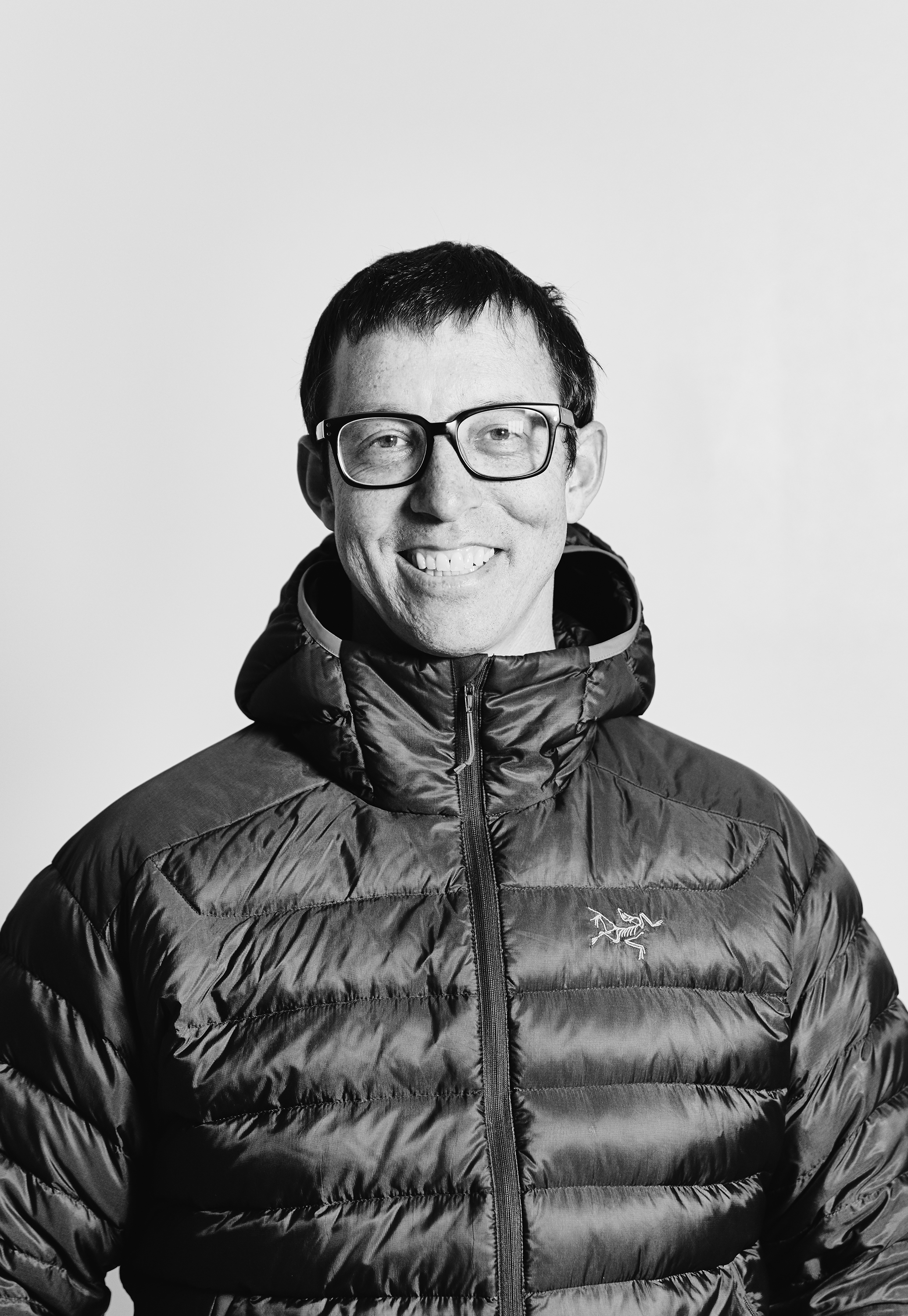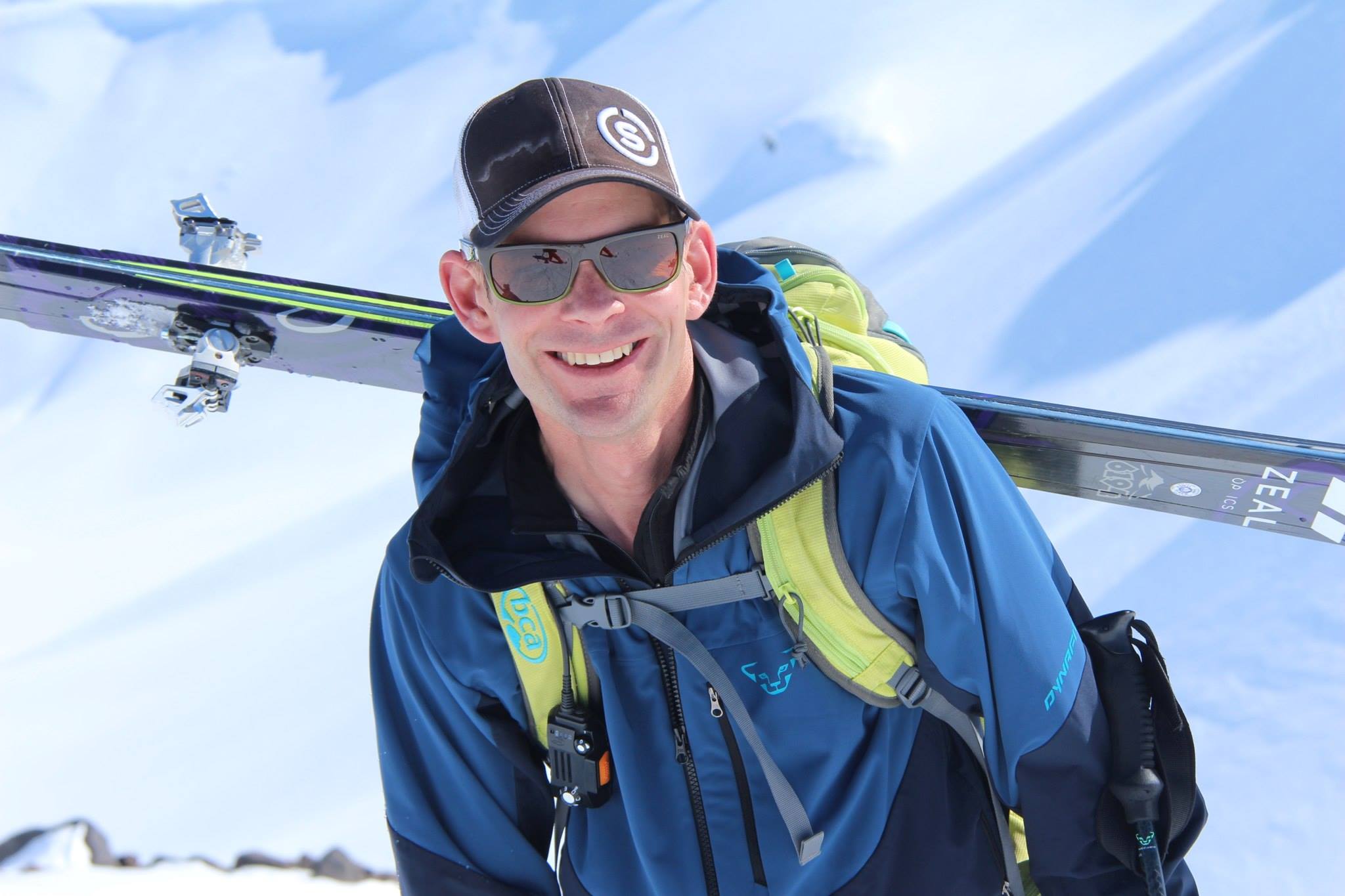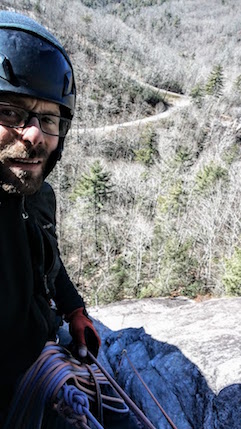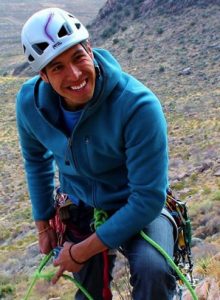Tino Villaneuva, the Advanced Ski Guide Exam, & the Five Ten scholarship
 Tino Villanueva won the partial tuition Five Ten Randal Grandstaff Memorial scholarship.
Tino Villanueva won the partial tuition Five Ten Randal Grandstaff Memorial scholarship.
Over the course of this winter, I spent the months leading up to the Alpine Guide Course heli-ski guiding and preparing for the Advanced Ski Guide Course and Aspirant Exam. I was nervous about my first exam in the AMGA certification process, and spent a significant amount of time preparing for the ski course. Immediately after the ski course, however, I was to participate in the Alpine Guide Course. I felt comfortable with the Alpine Guide Course looming on the horizon, having spent the majority of my career guiding in the alpine arena. But as the course approached, I began to feel all the familiar nerves twinging.
Despite my decade-long experience guiding in alpine terrain in the Cascades and on big mountains around the world, or perhaps specifically because of it, I started to dread the expectations that others would have of me, as well as the expectations I had of myself. I take pride in my career, my craft, and I want to be the best at what I do. To be a better guide, I have acknowledged that training and certification from experts in my field is essential. Though it is always uncomfortable to subject oneself to peer review and scrutiny, it is essential to the development of one’s career.
The AMGA is essentially college for mountain guides and is the only organization providing training to create better guides. Alpine guiding is the truest realm of the mountain guide. On any given day in the alpine, every facet of the mountain environment is encountered: rock, ice, snow. Long routes through complex terrain must be negotiated, and the “speed is safety” ethos is essential. As such, alpine guiding involves a tremendous amount of time short roping. Techniques for the alpine guide, while time-saving, can appear sketchy. Oft considered the dark art of rope work, short roping can seem like rope magic. But the Alpine Guide Course takes the mystique out of these techniques by allowing participants to test techniques to failure in a safe environment.
Just as with alpine climbing on my personal expeditions, my days spent on the Alpine Guide Course were filled with these constant subjective assessments—whether to belay here, whether to place additional protection there. Each movement is a subjective evaluation of the terrain followed by a subjective decision as to what technique to implement. I benefitted greatly from having the freedom to make my own decisions and assessments while guiding the instructors on various climbs, as well as the subsequent discussions that we engaged in regarding the decision-making processes. I was challenged to reach outside of my comfort zone while guiding because of the instructor’s confidence in my ability to do so.
Regardless of one’s level of experience, participation in the courses and examinations leading to AMGA certification is stressful; the Alpine Guide Course was no exception. For me, the stress was not so much in committing a clear fail in providing security or technical systems, but rather running afoul of the infinite number of subjective decision-making points made on a daily basis in the alpine. My concern was misplaced; not because I always made the “right” decision, but because at the end of the day many of the decisions made in the alpine really are subjective and the Alpine Guide Course is intended to foster discussion and teaching about just these types of scenarios. I was inspired to reach to a higher level of understanding of alpine climbing situations by the thoughtful, encouraging instruction of the American Mountain Guides who led the course.
Attending the Alpine Guide Course, which was made possible by the generous scholarship granted by Five Ten, served as a solid reminder that the only way to become a better guide is through continuing education and the advice, criticism, and thoughtful discussion of our peers and leaders. I experienced firsthand that the AMGA is not only an organization committed to training mountain guides, but also to fostering brotherhood amongst mountain guides and inspiring each other to be the best we can be. I look forward to the day when I achieve full certification and perhaps one day join the instructor corp to pay it forward to the next generation of professional guides.












